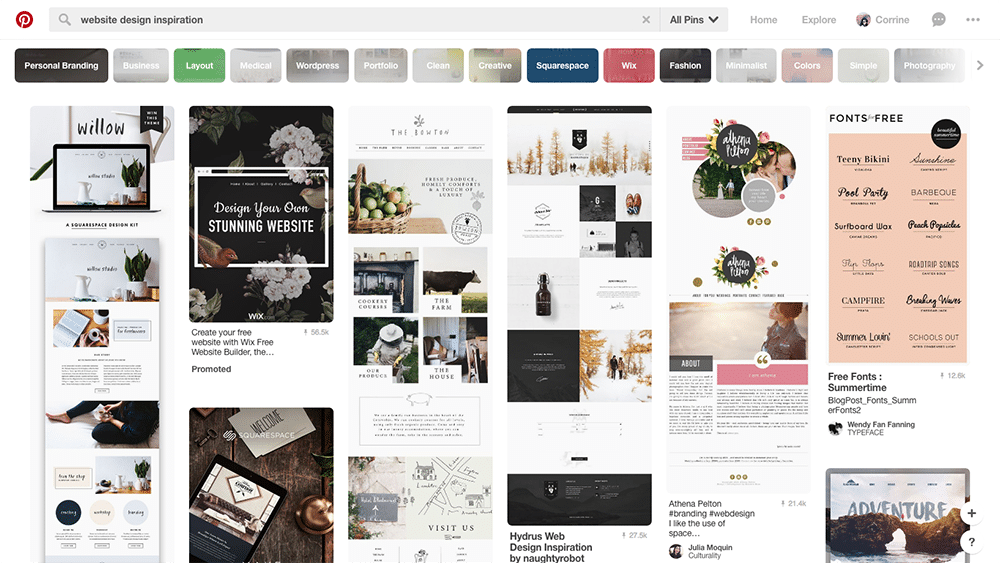Discovering the Impact of Receptive Web Layout on Accessibility and Individual Contentment Across Different Tools
The appearance of responsive internet design (RWD) has actually changed the digital landscape, specifically in improving access and individual contentment across a wide range of devices. By using adaptive user interfaces and adaptable formats, RWD not only provides to varied customer demands however also attends to the essential value of inclusivity in web experiences.

Meaning of Responsive Website Design
Receptive Website Design (RWD) transforms the user experience across different tools by making sure that web content adapts fluidly to various display dimensions and positionings. This layout technique makes use of flexible grids, formats, and pictures, together with CSS media inquiries, to develop a seamless browsing experience. By utilizing these techniques, RWD permits sites to instantly resize and restructure web content, making it easily accessible on devices ranging from desktop computer computers to smartphones.
The core concept of RWD is to give an ideal viewing experience, which includes simple reading and navigating without the demand for excessive scrolling or resizing. This adaptability is necessary in an electronic landscape where users gain access to info via various devices with differing screen resolutions. RWD not only boosts usability but likewise improves lots times, as it usually employs a solitary codebase to serve numerous gadgets, decreasing the requirement for separate mobile websites.
Eventually, Receptive Internet Style intends to produce a appealing and natural individual experience, guaranteeing that material is visually enticing and functionally efficient, despite the gadget being utilized. This versatility is important in fulfilling the varied demands these days's net individuals, fostering engagement and contentment across platforms.
Importance of Ease Of Access
How can we make certain that all individuals, regardless of their capabilities, can engage with internet content successfully? Availability in website design is of paramount significance, as it fosters inclusivity and guarantees equal accessibility to details for people with impairments. This incorporates aesthetic, acoustic, and cognitive problems, requiring designers to think about diverse customer needs.
Executing ease of access features, such as alternative message for images, keyboard navigation, and ideal shade contrast, permits individuals to interact with content effortlessly. Furthermore, sticking to developed standards, such as the Web Content Ease Of Access Guidelines (WCAG), offers a framework for producing available web experiences. web design.
By prioritizing ease of access, companies not only follow legal needs but also improve their brand name credibility, showing a dedication to social obligation. Available sites often result in boosted usability for all customers, as features made for inclusivity can profit a broader audience.
Eventually, the importance of accessibility goes beyond simple conformity; it has to do with producing a digital setting where every individual can browse, understand, and involve with content effectively, therefore enhancing the total web experience for everyone.
Customer Satisfaction Throughout Instruments
Lots of individuals expect a smooth experience when accessing internet content throughout different gadgets, from desktops to smartphones. This expectation is rooted in the boosting diversity of tools and screen sizes offered today. Receptive internet style (RWD) plays an essential function in meeting these assumptions by making sure that sites adjust fluidly to various screen environments.
Individual complete satisfaction is substantially influenced by the accessibility and usability of an internet site - web design. When customers can easily navigate, read, and interact with material no matter the tool they are using, their general fulfillment boosts. A well-implemented receptive design decreases the need for zooming or straight scrolling, which can lead and annoy customers to higher bounce prices
Furthermore, individual fulfillment is additionally impacted by factors such as filling rate and aesthetic appeal. RWD techniques that enhance images and enhance code can enhance performance, thereby adding to an extra satisfying customer experience. As individuals involve with web content that is tailored to their gadget, they are more probable to hang out on the website, return for future check outs, and advise it to others. Inevitably, receptive click reference website design fosters a positive relationship in between users and web material across tools.
Effect on Mobile Users

The impact of RWD on mobile users expands past appearances; it considerably influences use. A well-designed receptive site reduces the requirement for too much scrolling and zooming, promoting a much more user-friendly interaction. Additionally, it promotes inclusivity by suiting individuals with differing abilities, making sure that those who count on smart phones can access information with convenience.
Furthermore, mobile customers take advantage of much faster filling times, as RWD enhances resources based upon device abilities. This effectiveness is vital, as mobile individuals usually seek fast info and might desert websites that stop working to pack immediately. Eventually, the combination of responsive web design is important for satisfying the diverse demands of mobile individuals, improving their general experience and motivating continued engagement with the web content.
Best Practices for Application
Executing receptive website design (RWD) effectively calls for adherence to several finest methods that make sure optimal performance across tools. First, utilizing a fluid grid layout is necessary; this permits components to resize proportionally based upon the display measurements, giving a smooth experience. Furthermore, employing flexible photos makes sure that visuals scale properly without losing high quality or triggering layout issues.

It is likewise vital to regularly check the web site throughout numerous platforms and devices to recognize prospective functionality problems. Tools such as find web browser designer devices and receptive layout screening solutions can assist in this process. Guaranteeing that all interactive components are touch-friendly and maximizing web page lots times considerably add to customer complete satisfaction and accessibility. By adhering to these finest methods, companies can create a durable and available internet visibility that fulfills the diverse requirements of customers across different tools.
Conclusion
In verdict, receptive internet style plays a vital function in enhancing availability and customer complete satisfaction throughout diverse tools. Eventually, the assimilation of ideal practices in responsive design cultivates inclusivity, lowers bounce prices, and promotes higher user engagement.
The introduction of receptive web layout (RWD) has changed the digital landscape, particularly in improving access and individual satisfaction throughout a wide variety of tools.Receptive Web Design (RWD) changes the individual experience across different devices by making sure that internet content adapts fluidly to different display sizes and positionings. Inevitably, receptive internet layout promotes a positive partnership between users and internet material across devices.
Over 54% of international web website traffic currently originates from mobile tools, highlighting the important value of enhancing web experiences for this customer base. Responsive web design (RWD) plays a pivotal function find out this here in improving availability and user satisfaction for mobile individuals.
Comments on “Leading Patterns Shaping the Future of Cutting-edge Web Design”